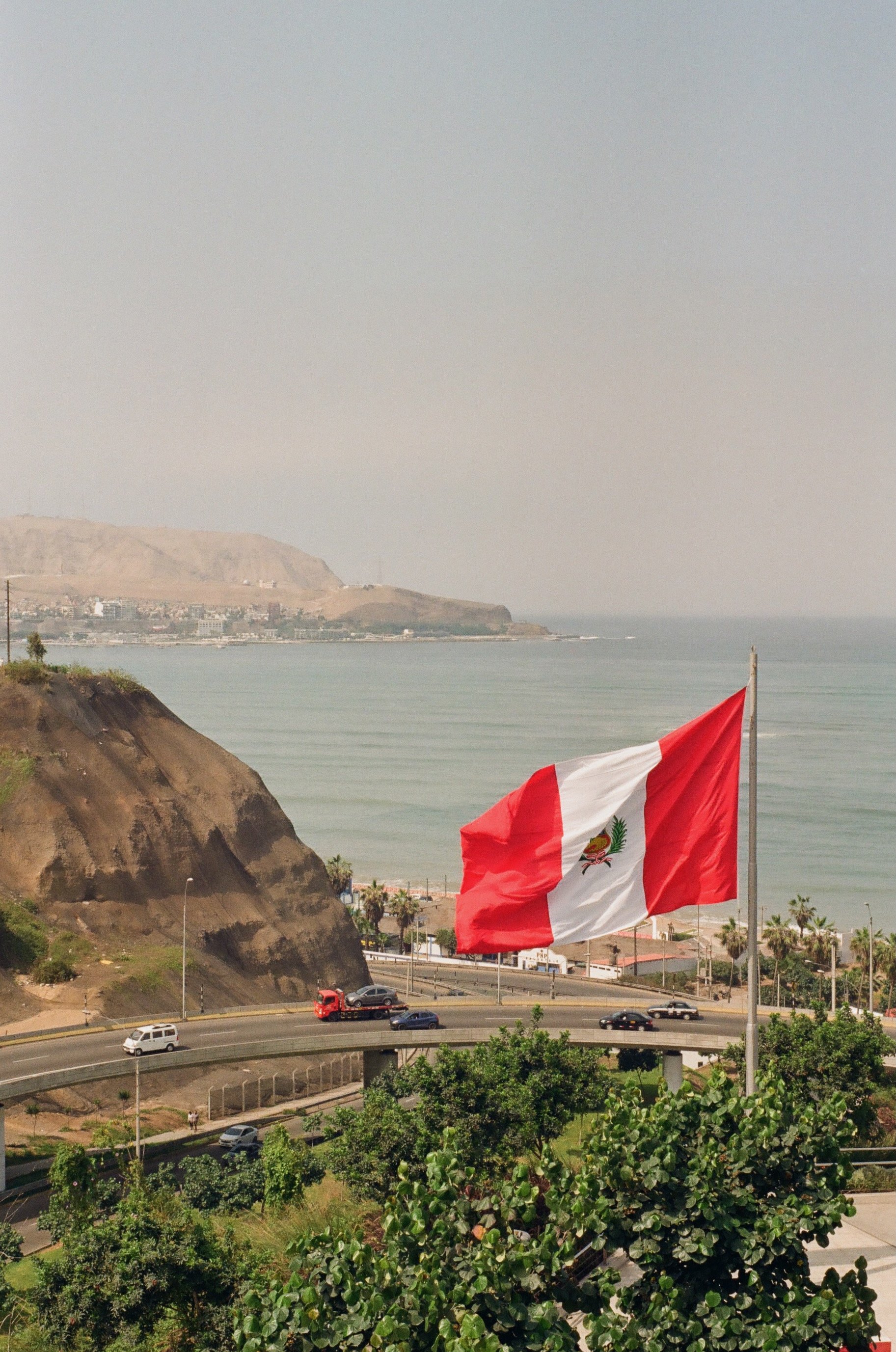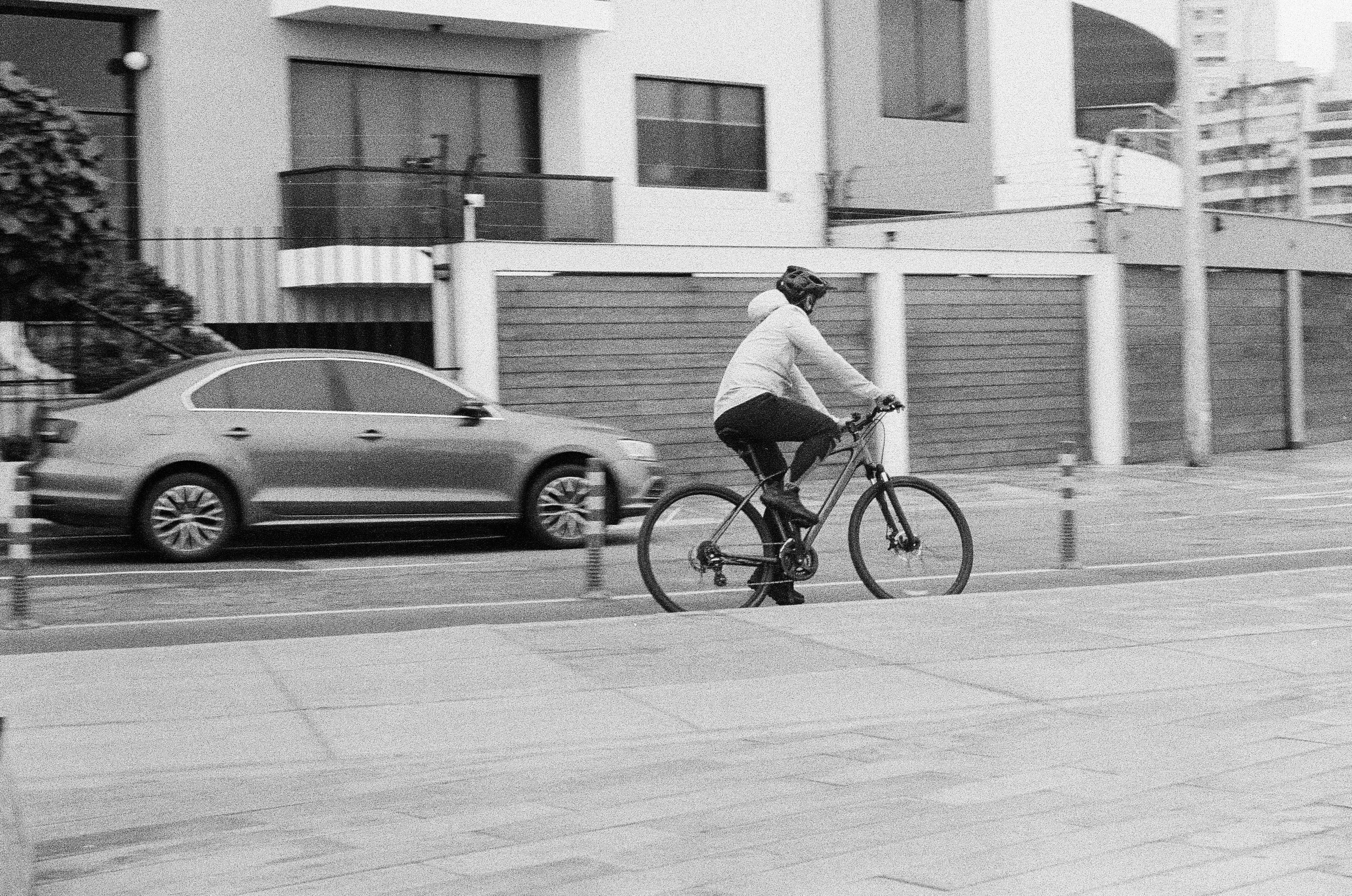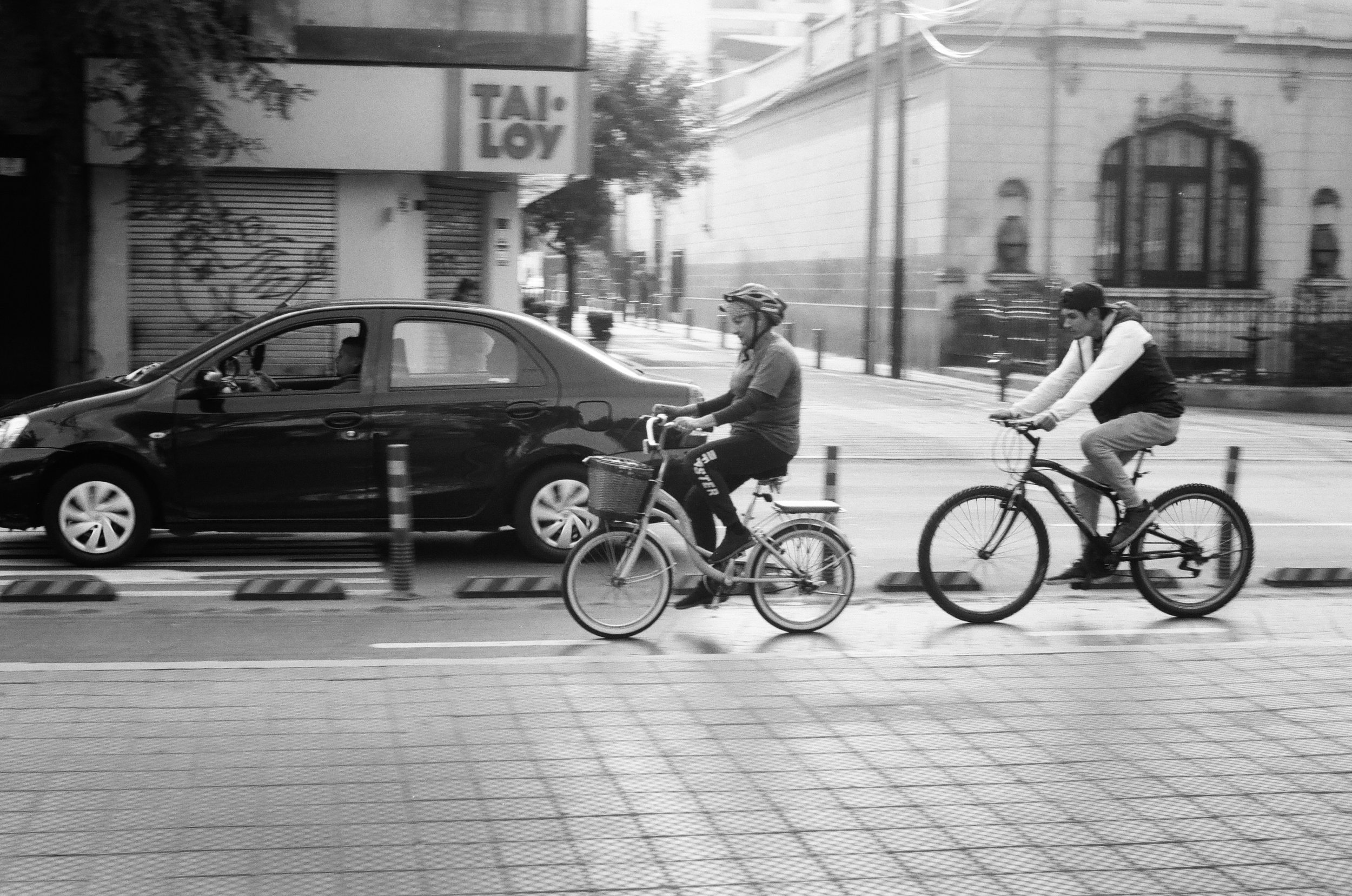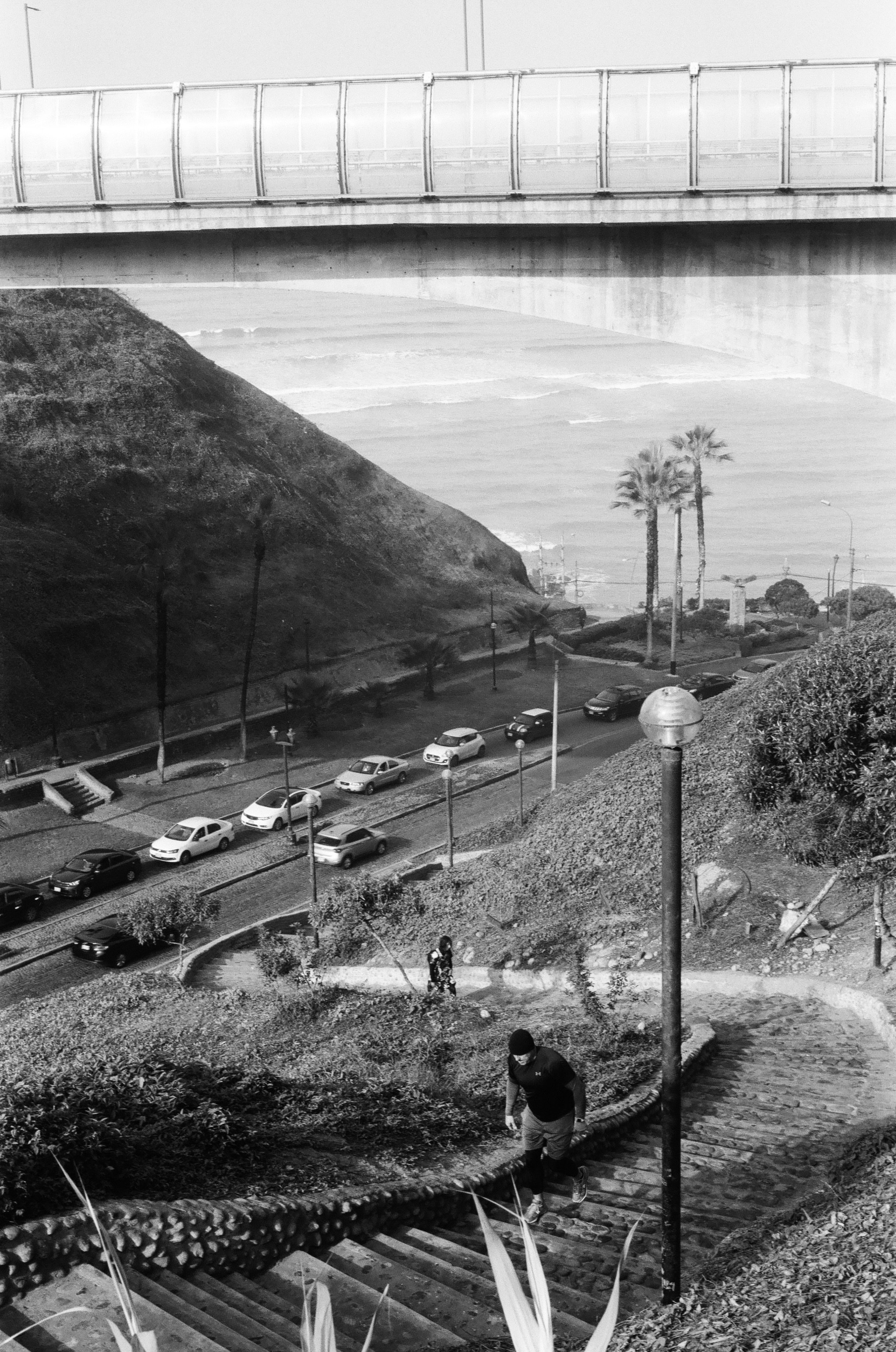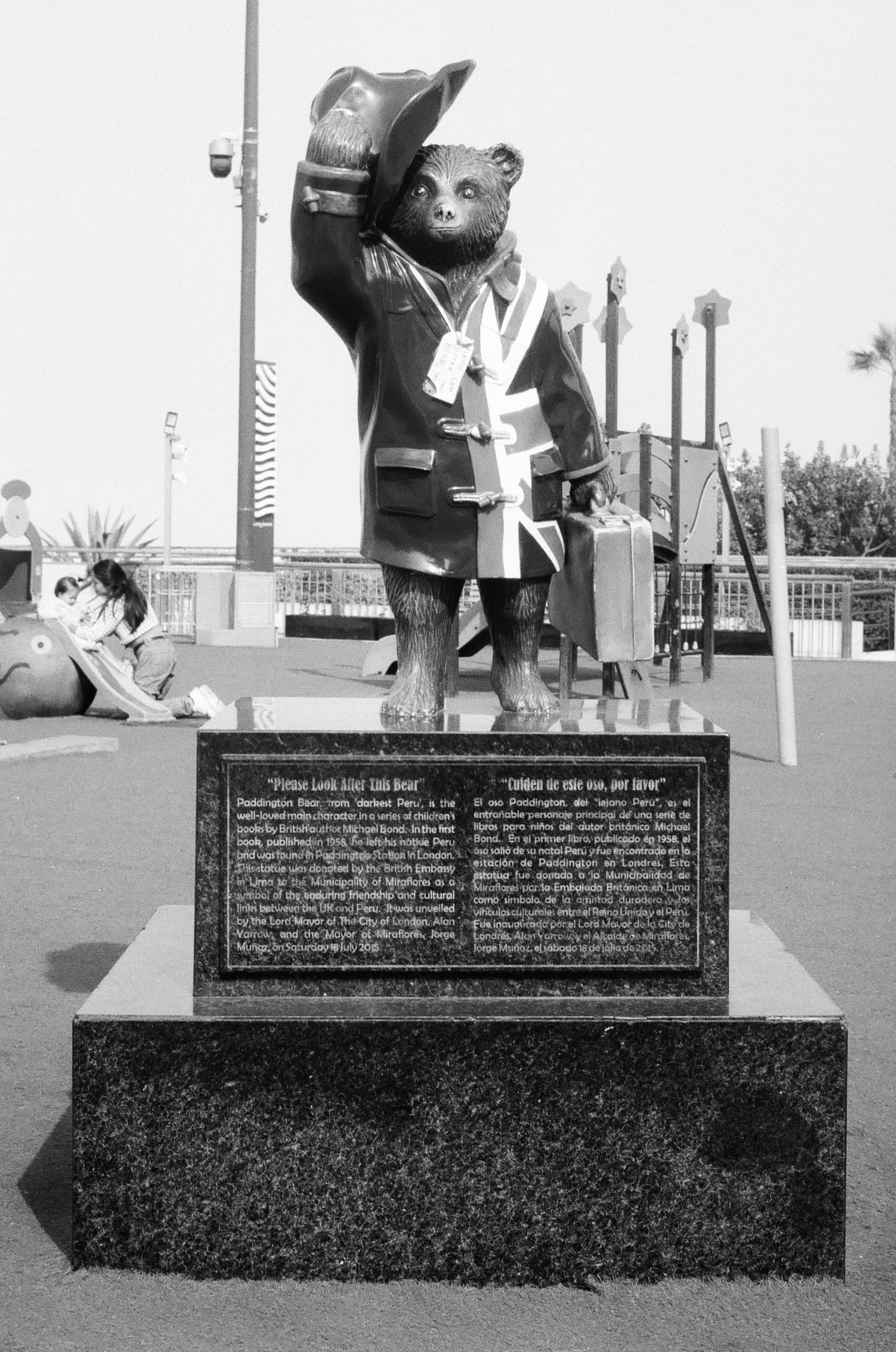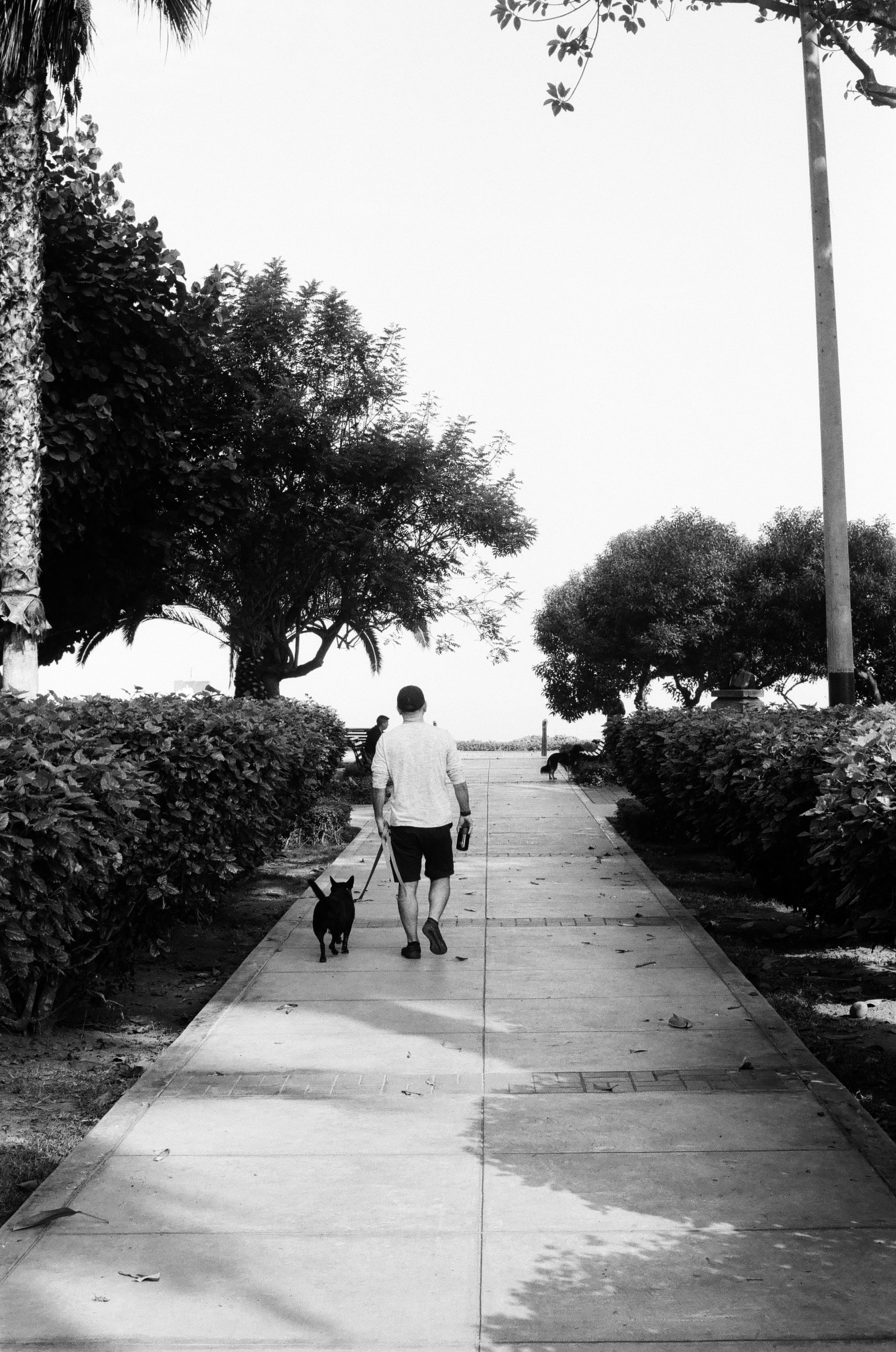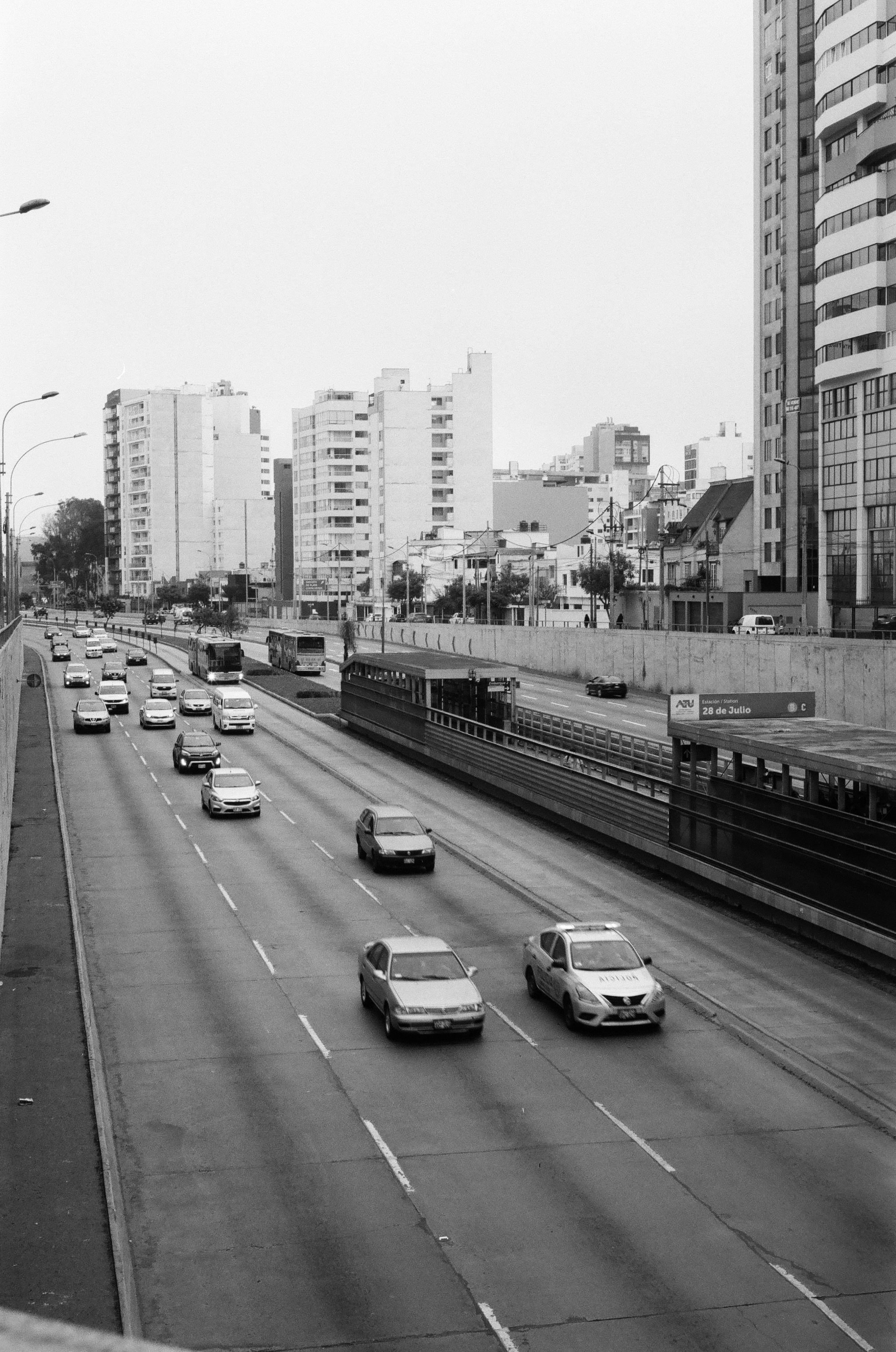Miraflores, in Film
Three years ago, just shy of the pandemic, I had the opportunity to travel to Northern Italy and brought along my father’s refurbished Kodak Retina IIIc camera along for the trip.
It was a joy shooting with film again. The anticipation of seeing the results of the developed film was palpable. I’ve since shot with the camera again, but nothing worthy of sharing, until now.
I brought the camera with me in late September for my trip to Lima, Perú , and spent several days roaming the streets of Miraflores. I highly enjoyed capturing the sites that make this district so special.
September 2023, images/text: Martin Fernandez
Several years ago, my brother Miki gave me our father’s old Retina IIIc Camera. My dad was an officer in the Air Force, and often traveled around the world. During one particular trip to Germany in the late 1950s, he bought the camera. I personally have little recollection of it being used by my dad, since I was born in the mid 60s, and by then it was hidden away in a drawer. It wasn’t until my brother passed it on to me, that I was able to learn its history, and put it to good use.
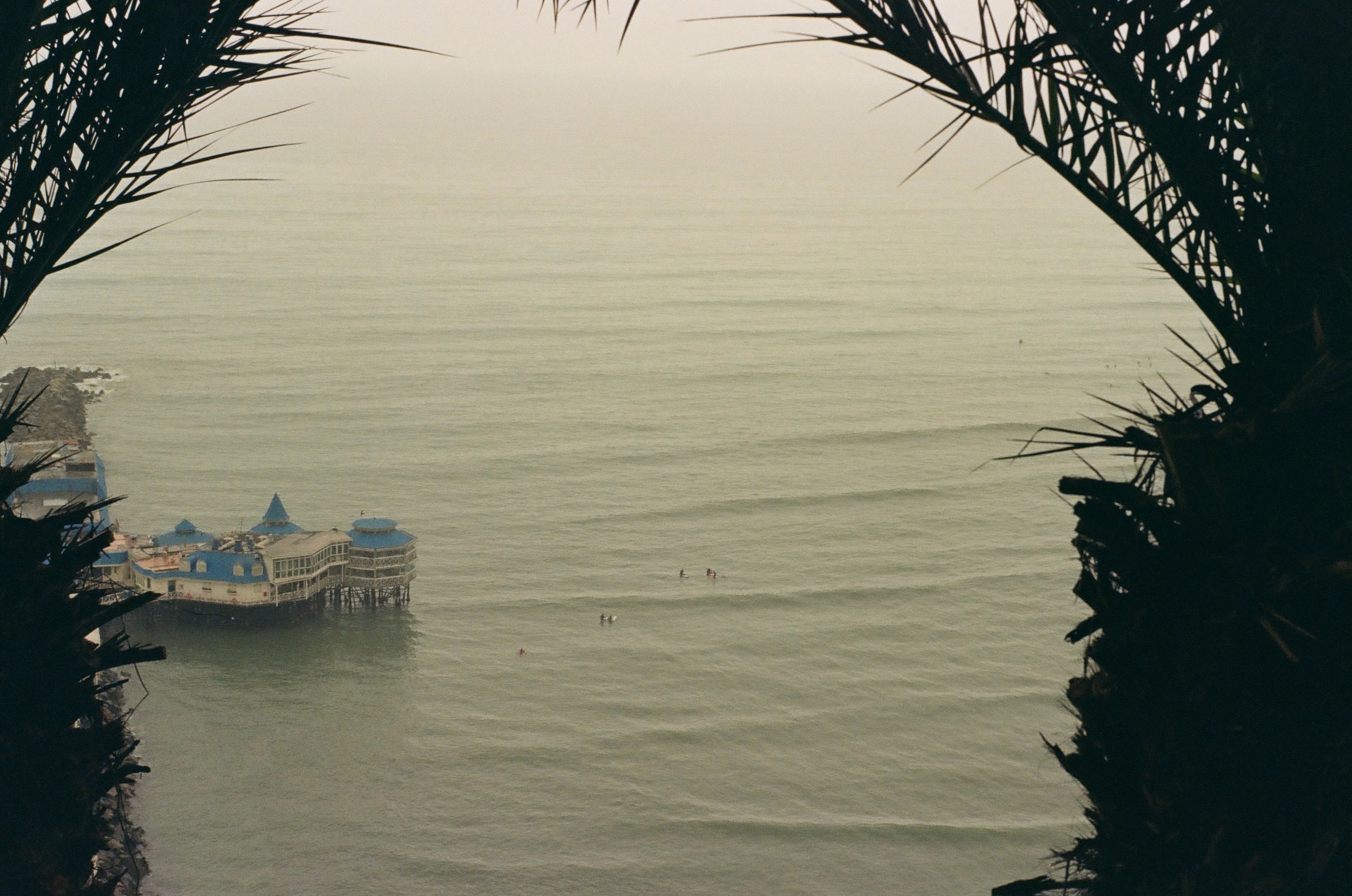
ABOVE: The view from “Sunset Park” of La Rosa Nautica Restaurant. Makaha is a popular beginner surfing spot. Surfers can be seen on the water year round.
By the time the camera made it into my hands, it was in disrepair. I too put it away for a few years. It wasn’t until late 2019, before heading to Italy, that I decided to take it out and have someone refurbish it. Finding that someone proved to be a little more difficult than I anticipated, but thanks to google and various vintage photography forums, I located Chris Sherlock in New Zealand. I shipped it off to him for the much needed service.

ABOVE: Sipping coffee at my hotel before heading out for one of my regular morning walks. The Kodak Retina IIIc reflected in my iPhone’s screen. I shot hundreds of images on my phone, you can see some of them from my trip to El Mercado.
Shortly after it came back, I was able to take it with me to Torino and began the journey back into film photography. The images from Torino were probably the first to make it out of the camera in over four decades! The images on this page are the second batch of photos captured with it.

ABOVE: A view of la Quebrada Armendariz from El Malecon de la Reserva. The Peruvian flag in the background is perched along the new Bicentennial Park, which is carved along the ravine. The park allows people to walk down to the coast along gentle sloped and beautifully landscaped paths.
ABOVE: The view of la Costa Verde from one of the Bicentenial Park landings, one third of the way down the ravine.
I travel to Lima virtually every year and spend most of my time in Miraflores, where my elderly parents still live. The trips give me an opportunity to spend time with them, as well as to continue to explore and revisit the places I grew up in. Walking around and capturing the district’s scenes in film also gave me an chance to appreciate my surroundings a little more. The process of selecting what to shoot, composing an image, and clicking the shutter make the photography, make the end result deeply gratifying. Even now, seeing these images takes me back to those moments, and stir up the same emotions I felt while shooting them.

ABOVE: Lima the Grey. Lima, and its surrounding districts are often covered in a shroud of fog.
Lima and its surrounding districts, including Miraflores, are often covered (June - October) in a shroud of fog that veils the city from view. Herman Melville of Moby Dick fame called it the “tearless Lima” and described it as “the strangest, saddest city thou can’st see.”
Despite the fog and constant cloud cover, it seldom rains upon its soil. Yet, you’ll often walk along damp, slippery sidewalks. That dampness does have a benefit and why Lima was often referred to as the “garden city.”

ABOVE: One of several parks in Miraflores, el Parque Melitón Porras.
Miraflores (behold the flowers) is named because of the abundance of Bougainvillea, a vine with colorful flowers. The rest of the city is also known for its many abundant parks and dedicated green spaces. Despite it being a bustling concrete jungle, Limeños can always find calm respite from the chaos of the city in one of its many parks.
-
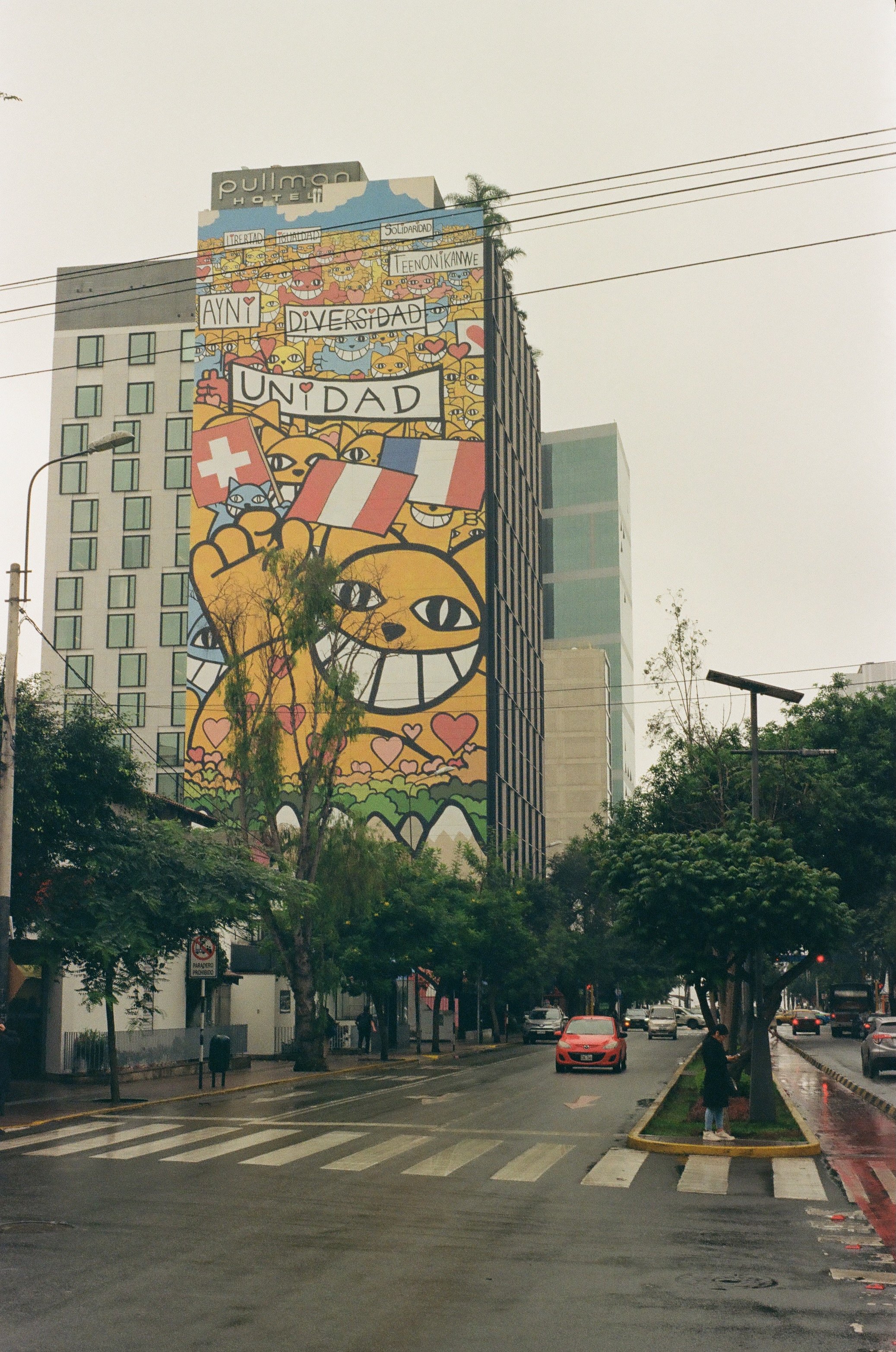
Avenida Larco during a misty morning. The otherwise drab wall of the Pullman hotel is decorated with a colorful mural.
-
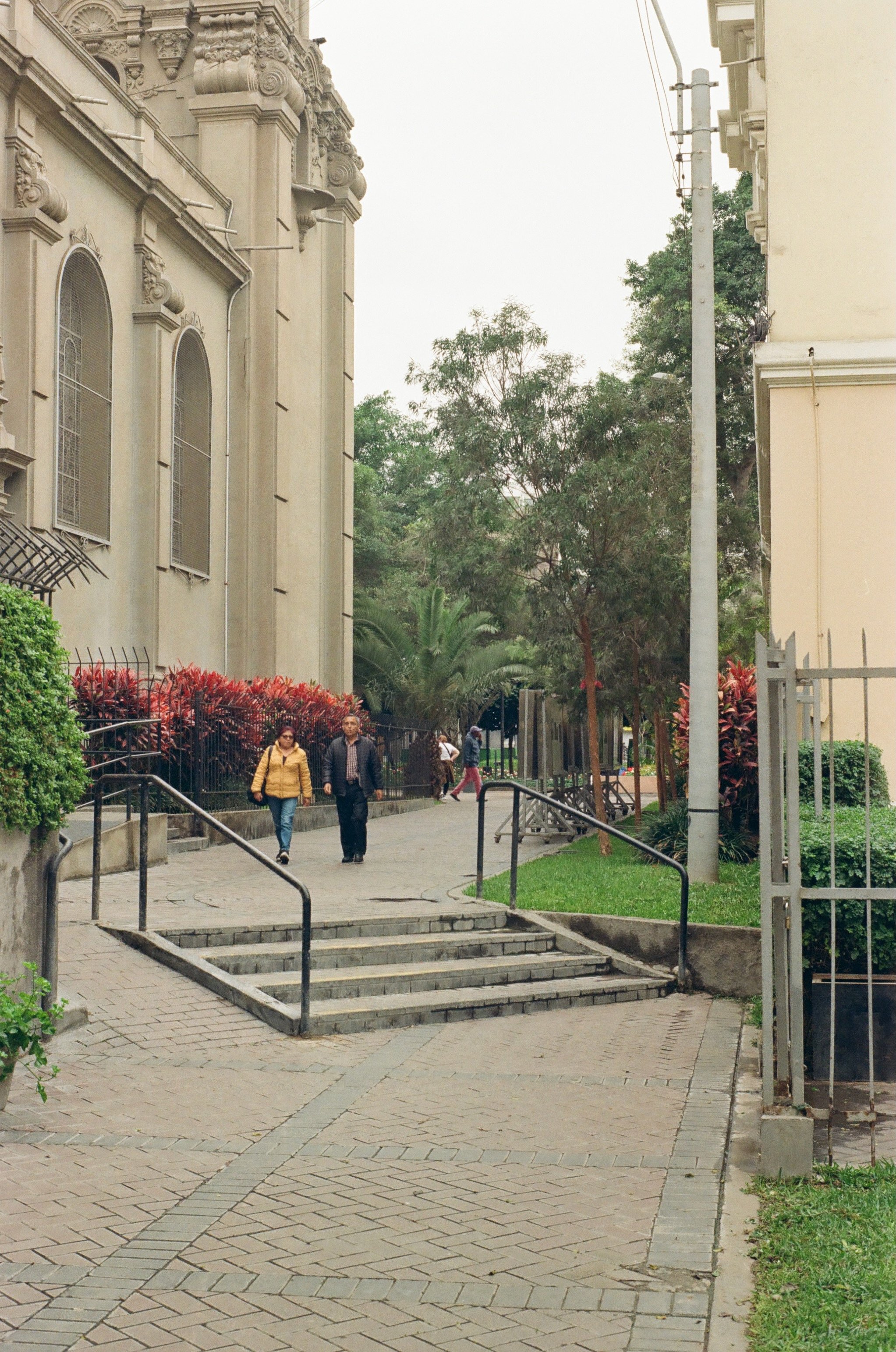
Walking between la Virgen Milagrosa and the Municipalidad de Miraflores on Pasaje Raul Torres Barrncechea.
-

The new walkways and pathways of the Bicentennial park in Miraflores offer great views of the Pacific and Barranco.
-
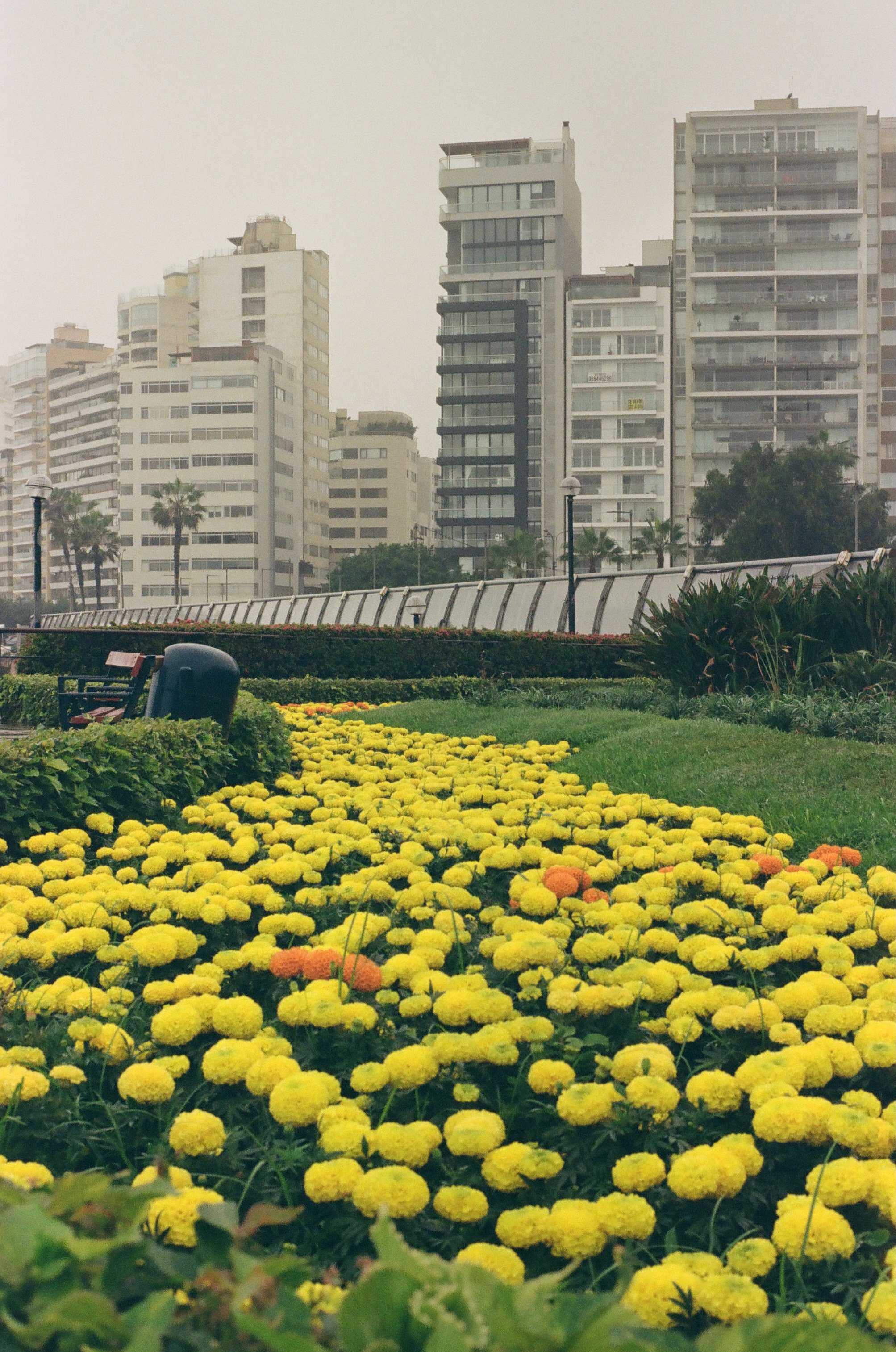
The Eduardo Villena Rey bridge as seen from the small Mariano Necochea Park along the Maleon de la Reserva.
ABOVE/BELOW: A few snapshots from my daily morning walks in Miraflores.
-

One of the wide tree covered paths of el Parque 7 de Junio in central Miraflores.
-

A building door man sweeps the sidewalk along Calle Alcanfores in Miraflores.
-

A couple makes their way along the Malecon along Parque Domodossola in Miraflores.
-

Calle Jose Gonzales in Miraflores is framed by flowering “Flame Trees,” commonly known as Royal Poincianas.
In addition to the color rolls of film I brought along for the trip, I also shot two rolls of Black and White film. Below are a few of the selected images from the 60 or so pictures that survived the development process.
ABOVE: Keeping in the spirit of Best Rides DC, Cyclists and scooter riders along the “cilovias” of Miraflores.
A walker makes her way along the central tree lined path of Avenida Pardo in Miraflores.
Morning traffic slowly makes its way up from la Costa Verde along la Subida/Bajada Balta. This road remains surfaced in cobbles and also provides a way down for walkers and runners to the coast below.
Paddington Bear from "darkest Perú". A statue honoring the beloved bear from Michael Bond's classic book on the playground above Larco Mar.
El Parque Domodossola in Miraflores, like all of the other parks that abound in Lima, is a favorite for dog walkers.
La Via Expresa, or locally known as El Sanjon. This is one of Lima's "express" arteries that ferries drivers and commuters to the center of the city.
ABOVE: La Pasteleria y Panaderia, San Antonio, has been a local landmark for decades. The establishment has survived surrounding progress and remains a local favorite for desserts, breads, empanadas, and other delicacies. San Antonio is always bustling with activity.
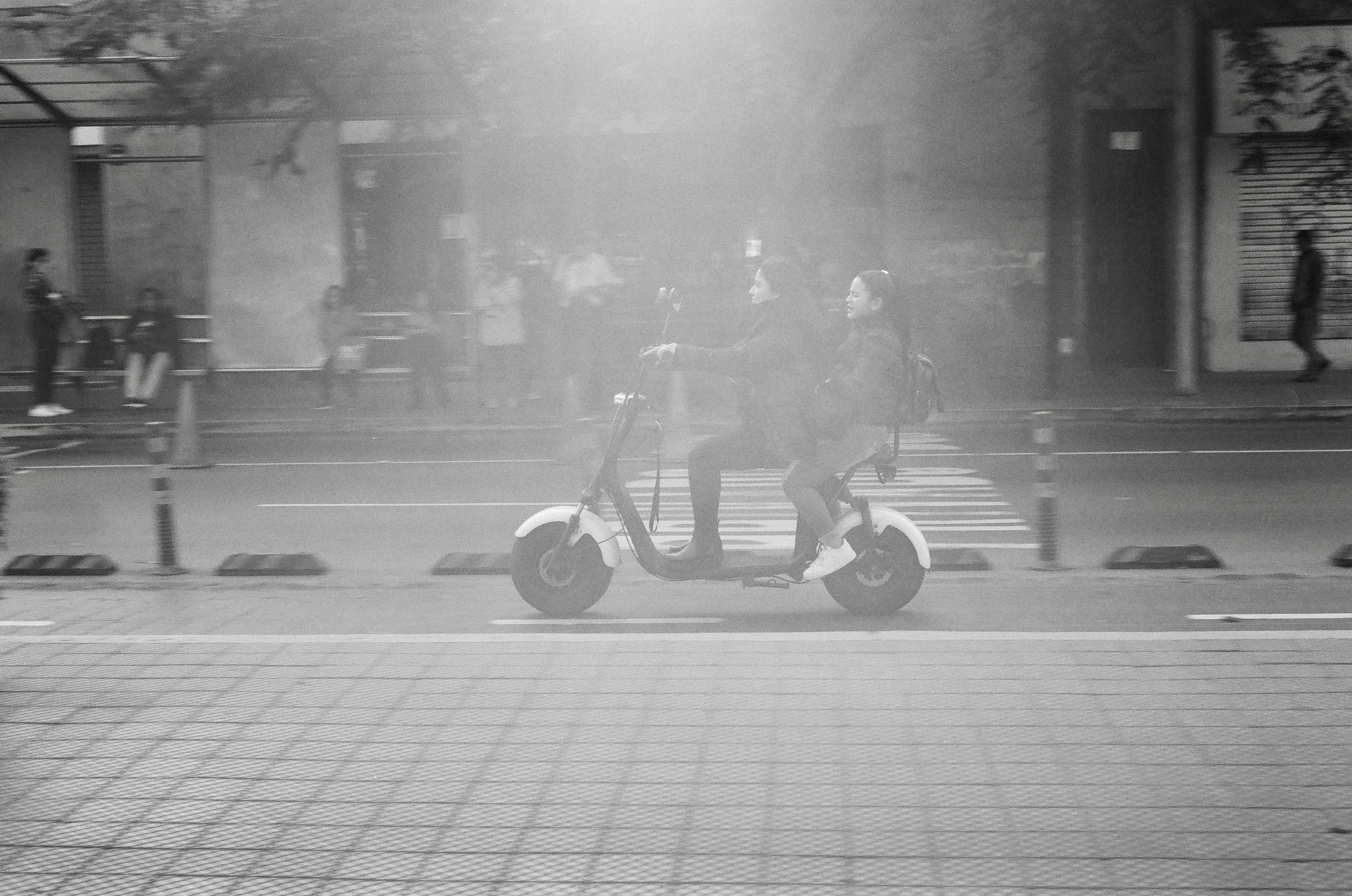
ABOVE: Scooters and bikes abound along the many “ciclovias” in Miraflores and surrounding districts. These protected cycle paths provide cyclists and scooter riders with a level of safety from Lima’s hectic traffic.
Other than some minor cropping and straightening the images are as they came out of the camera. I’ve done no color, exposure correction or any other digital work on them.
This journal entry is a “summary” compilation of entries I made in my Moleskine travel journal. Whenever I travel I bring it along for the ride and jot things down so I don’t forge them. I also bring with me a small Digital Bluetooth Printer so I can print out selected images, obviously, none of the ones you see here. The photo paper used on these little Zink printers has an adhesive back so that I can easily peel and paste it in my journal.

